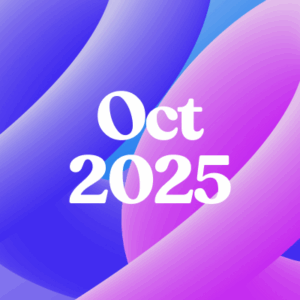
There is a rapid change in the internet with the websites rapidly adjusting to any gadget and screen size to bring the client the most unique experience conceivable. From worldwide partnerships like Sony, Microsoft, and Nokia to worldwide tech stars like Salesforce to online travel monsters like Expedia, genuine players are going to responsive website architecture to walk in venture with the present patterns in and contact an even more extensive group of spectators of clients.
In any case, making responsive sites has its drawbacks. The worth the site gives to the client could easily compare to ever, and style regularly assumes a lower priority while execution rules. The issue is that presentation can’t be taunted up in Photoshop, and new techniques to address plan difficulties must be embraced. So here are 10 issues with making responsive structure sites, alongside 10 potential arrangements.
1. More Problematic Visual Stage
Previously, the customer needed to favour static pictures and screen captures before improvement could start. Today, structuring can be a progressively disorderly and liquid procedure of portraying and prototyping where the attention is on plan components and how they will be revamped, contingent upon various gadget measurements and goals.
Fix: There are two ways to deal with responsive drawing. One methodology is making draws for a work area landing page, just as each other site page, and afterwards adjusting them for the most well-known tablet and portable screen sizes and measurements. Another methodology is utilizing paper and conveying to the customer to exhibit structure formats and how they will reflow on various screen sizes. Structuring in the program and working with HTML and CSS models begins from the get-go; making an arrangement of parts and perceiving how they can be reassembled for various designs replaces the formation of wireframes for each and every page and state. The picked technique is normally directed by the multifaceted nature of the site.
2. Navigation
Prior to the responsive structure, each client knew where the route was. Despite the fact that today, the three bars at the upper left corner of the page, for the most part, speak to the true route “catch,” numerous clients still think that it’s hard to explore past the menu, particularly with regards to sites with entangled structure. Today, the entire idea of the route must be reexamined.
Fix: Designers ought to invest more energy attempting to make route instinctive and clear as crystal. Considering the site’s substance and data engineering, and getting clients—how and why they peruse the site—is the best way to settle on a novel route choice. Also, testing route on whatever number items as would be prudent can enable engineers to hit the nail on the head.
3. Appearance of Background Images and Icons
Pictures are significant to a client’s involvement on the web. In a responsive structure, pictures and symbols must be adaptable to enable clients to appreciate the designs on high pixel thickness gadgets, which are ending up progressively far-reaching. Ensuring the pictures don’t look foggy and inadequately scaled up is the objective of each architect and engineer.
Fix: Lazy stacking pictures can help streamline program rendering and lessen the quantity of HTTP round outings by conceding the stacking of pictures that are not in the customer’s view. Making symbols adaptable (utilizing the SVG position, which keeps symbols light yet high calibre) and retina-prepared can likewise enable clients to appreciate the size without loss of value on any gadget.
4. Indicating Data on Small Screens
Indicating information tables (aircraft flight timetables, for example) on little screens is a genuine issue when the tables are intricate and tangled. It doesn’t help that they are additionally regularly huge with an incredible number of lines and sections.
Fix: Responsive tables are the best wagered at the present time. There are additionally different techniques: relinquishing the matrix format and making a little table that doesn’t call for flat looking over; building progressively minimal pie graphs of tables; supplanting tables with littler variants while offering a connect to the full form; concealing irrelevant components on little screens with a dropdown menu with access to the full table; rainbow tables where hues are utilized rather than segments; and notwithstanding flipping the table on its side to make it fit.
5. Making Rich Experiences that Load Fast
Probably the greatest test is finding the harmony between rich client experience and the quick-paced nature of the Internet. Responsive sites once in a while gauge a ton, and in light of the fact that they pull in rush hour gridlock from the two work areas and cell phones, the experience can experience the ill effects of moderate stacking times. This implies losing business, as most of the portable clients leave following five seconds of not getting what they anticipate.
Fix: The arrangement is restrictive stacking, which takes into account stacking of just what clients need when they need it. The standard guideline is this: first burden content, at that point improvements, at that point, remains. With clients so used to loads of pictures, displays, records, downloads, and so on a website, with the portable first approach, fashioners should take care to keep just the components that are totally important to pass on the message of the site. Since the expansion of cell phones is outpacing work areas, restrictive stacking is the best approach. What’s more, since in restrictive stacking numerous computerization devices for scaling and storing pictures are utilized, it rolls out future improvements to the site simpler and quicker. Additionally, expecting that the client association isn’t flawless is an absolute necessity to give elite.
6. Longer Designing, Developing, and Testing Periods
Since responsive sites need to work incredibly well on numerous (altogether different) gadgets—all while flaunting rich usefulness and confusing plan components—they frequently take more time to configuration, create, and test. Typically it takes about twice as long to plan a responsive site contrasted with a standard site.
Fix: The issue as of now contains an answer. Despite the fact that responsive destinations may take more time to make, they are a likewise better possibility for slow change and regular development. Rather than executing significant updates to a site, which are expensive and extensive, responsive locales can develop bit by bit, sparing proprietors a ton of time and exertion over the long haul.





















